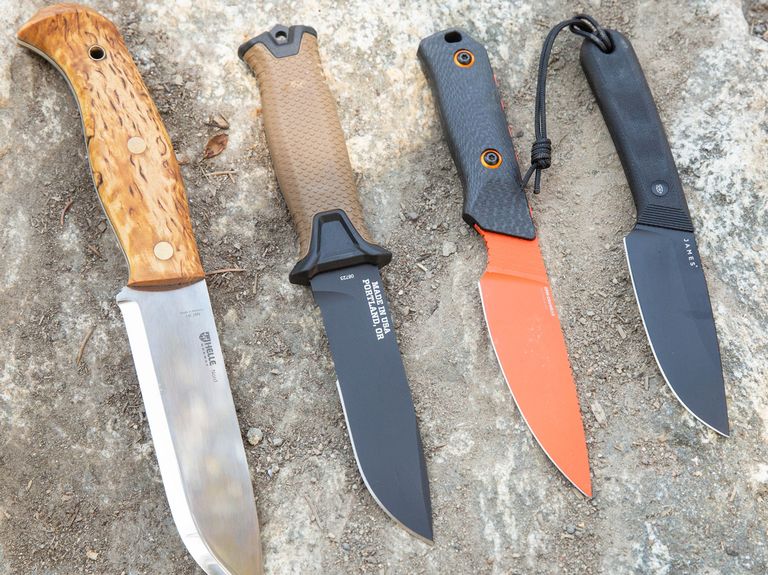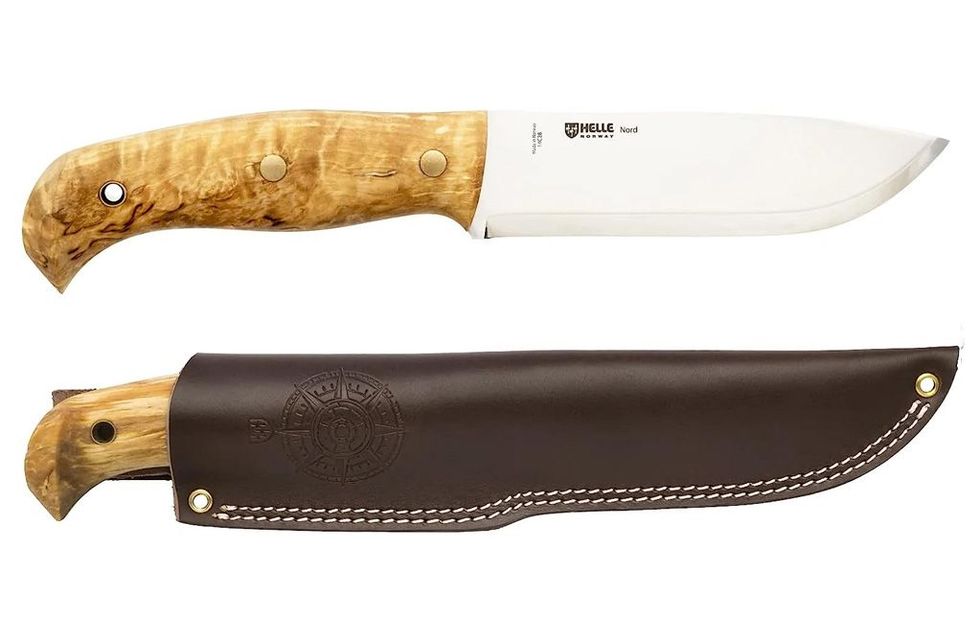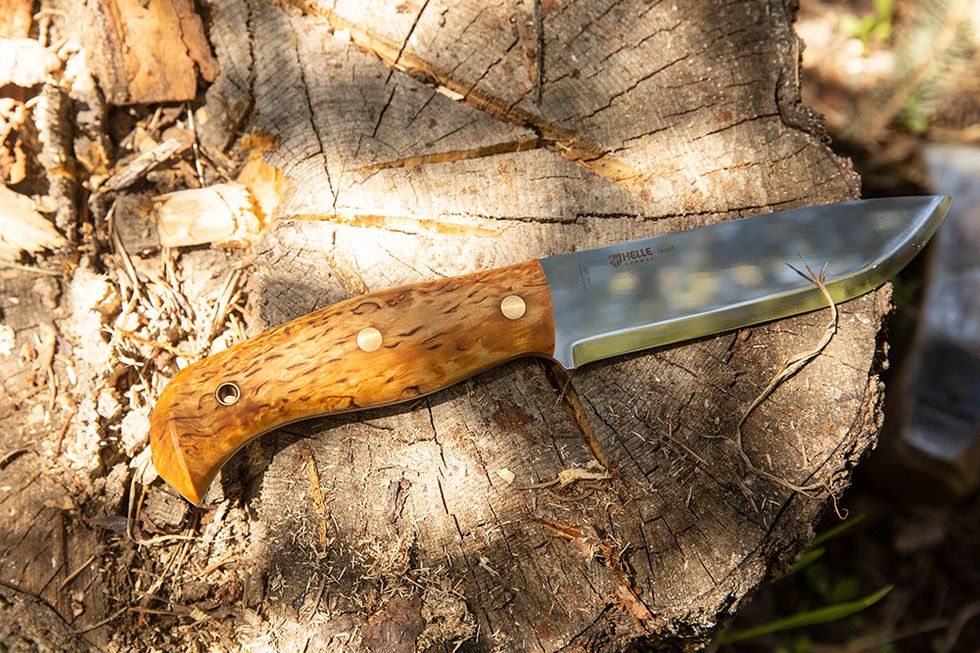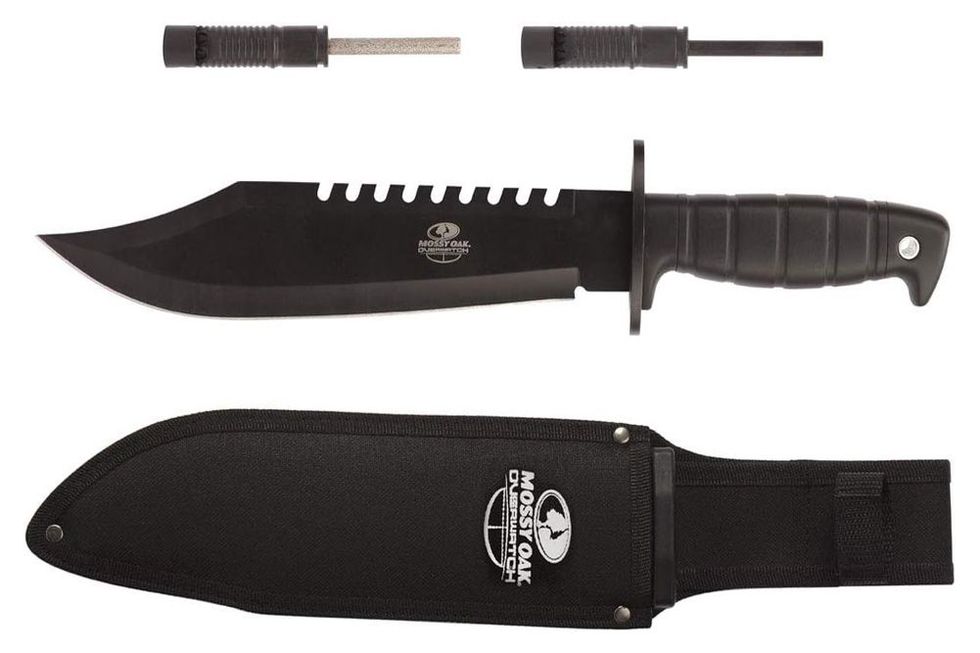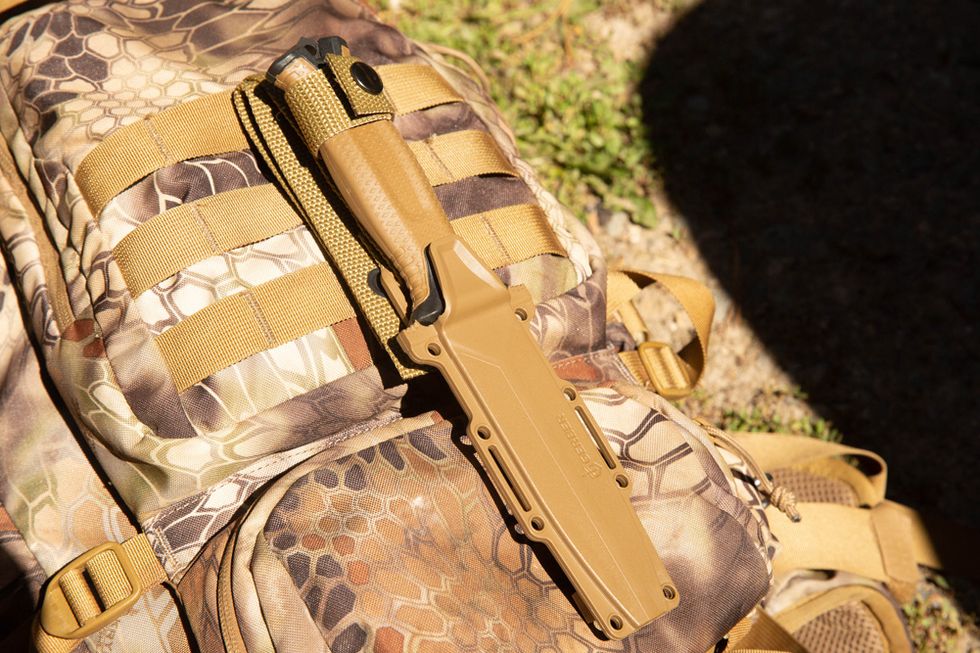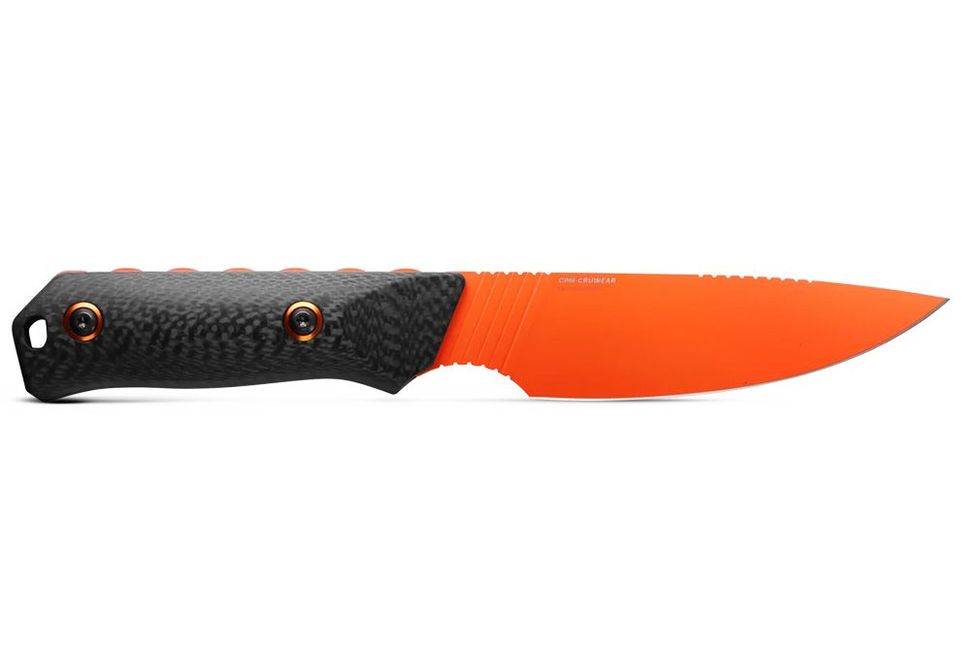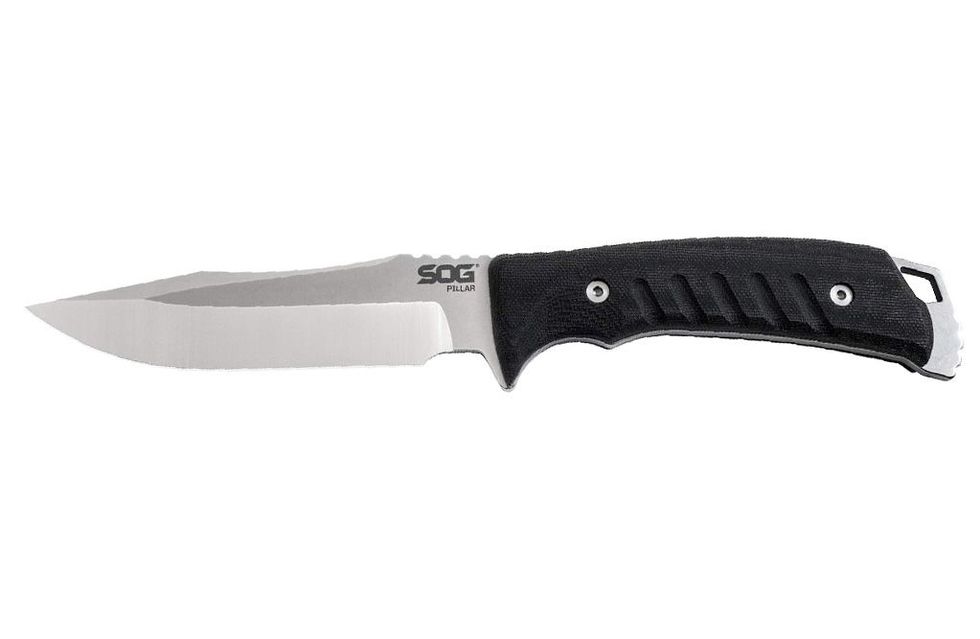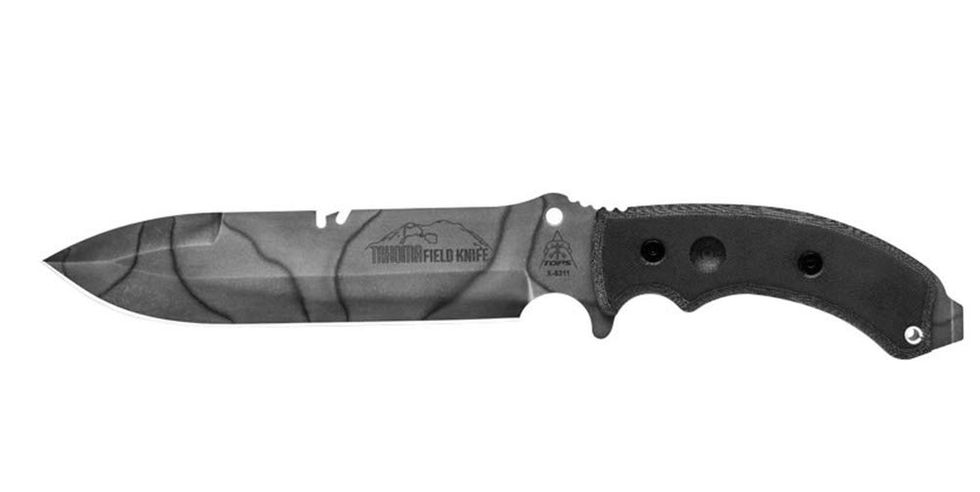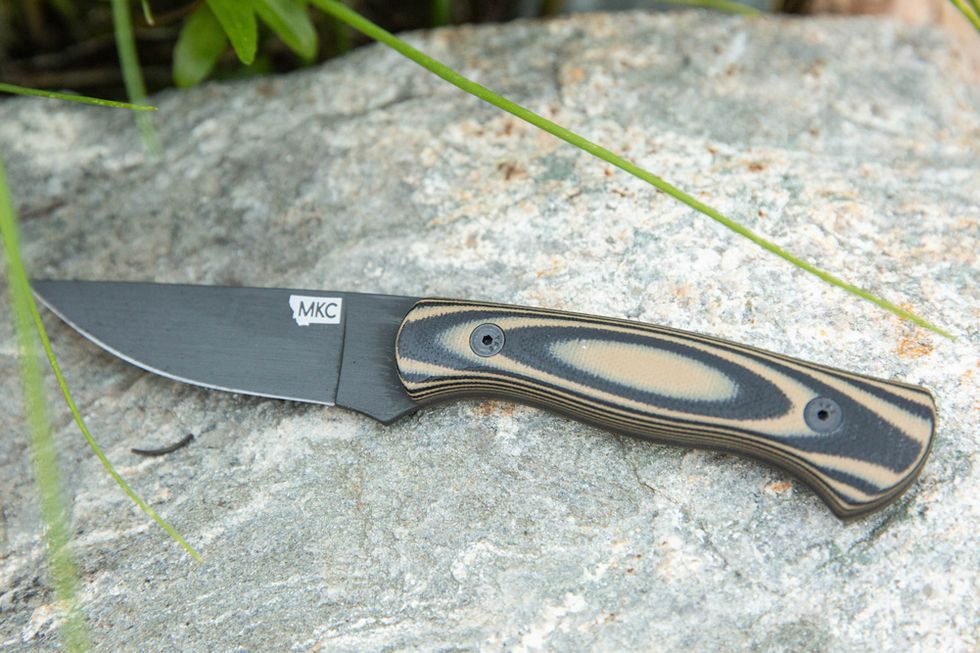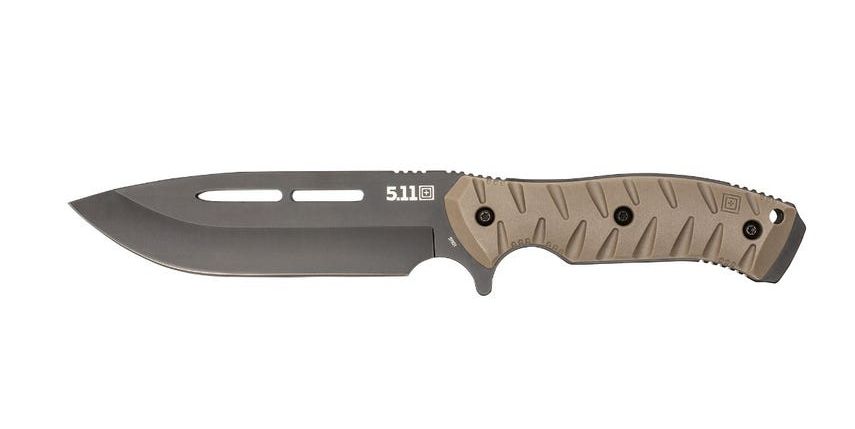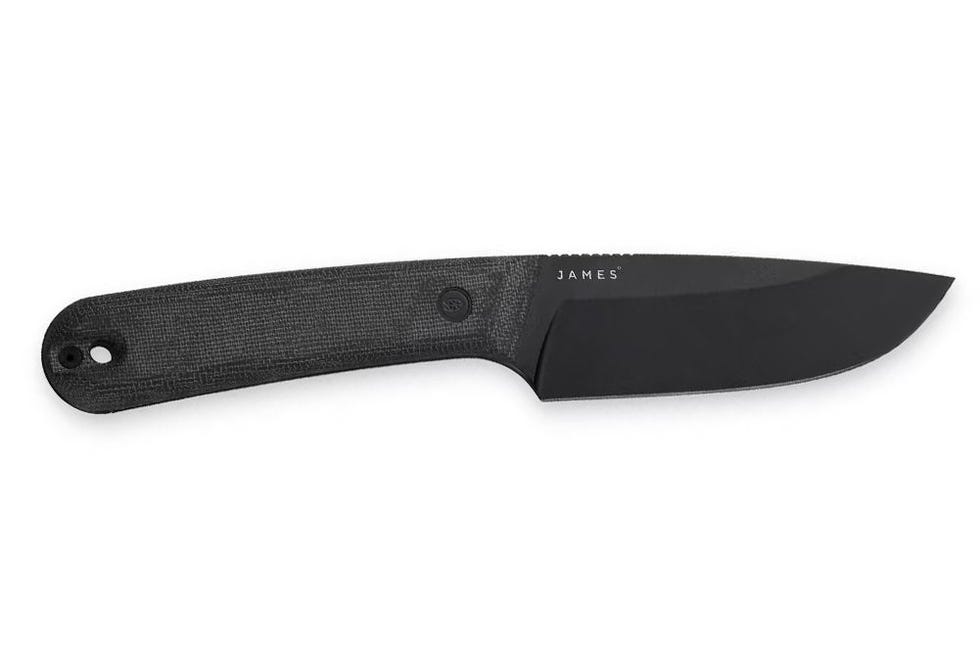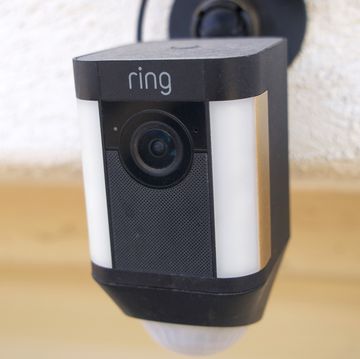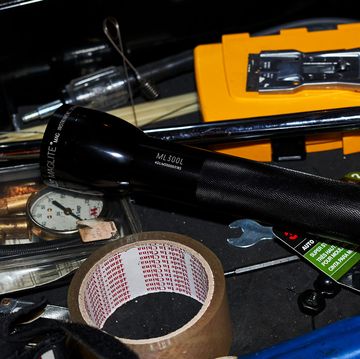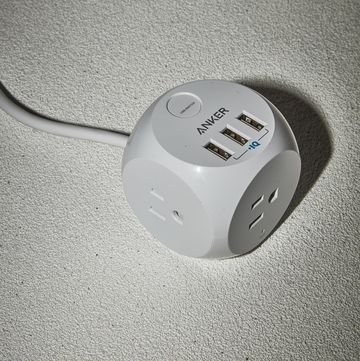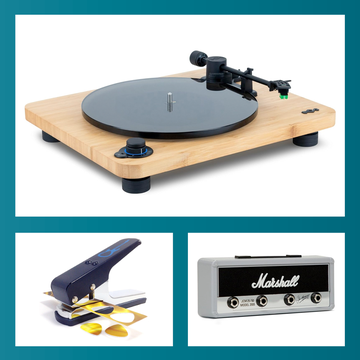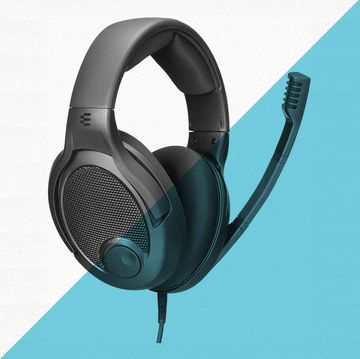Knives are tools and while a solid pocket knife is the most many people will ever need in the modern world, sometimes bigger jobs call for bigger tools. Whether you call them survival knives, tactical knives, Bowie knives, “Rambo” knives—whatever you prefer—these long, fixed-blade knives are built to bear more durable and handle larger jobs than your average everyday carry knife can easily handle.
It’s a broad category that covers lots of ground in the knife marketplace so we’ve provided plenty of guidance to help you narrow your search. For starters, think about how you will use a survival knife in the real world. If “survival” means urban self-defense to you, you’ll want a different knife than the backcountry backpacker or hunter who wants a tough blade for building shelter and skinning game.
Generally speaking, a survival knife will be longer, wider, and thicker than a pocket knife. The added size makes it less practical for delicate tasks but much more capable as a tool for prying, cutting, digging, chopping, piercing, batoning wood, plus all the unexpected uses a true survival situation might press upon you.
Best Survival Knives
- Best Overall: Helle Nord
- Best Budget: Mossy Oak Survival Knife
- Most User-Friendly: Gerber StrongArm Tactical Knife
- Best Premium: Benchmade Raghorn Carbon Fiber
- Best for Bushcraft: SOG Pillar
The Expert: I’ve been using knives for survival, both simulated and real, since I was kid. My younger brother and I subjected ourselves to voluntary stints living and sleeping in the woods, building shelters, camp kitchens, and even dams. My survival knife activity has trended more practical as I’ve gotten older, like extended hunting and backpacking trips in the Colorado Rockies. Still, I've always needed a good, durable knife, which has led to me test and review them professionally for several years for Popular Mechanics and other publications. As part of that work, I keep tabs on the latest and greatest from the world’s big knifemakers.
What to Look For in a Survival Knife
How We Selected The Best Survival Knives
I put more than a dozen knives through their paces, using the same set of tests used by editors Adrienne Donica and James Lynch in previous versions of this guide. Our testing regimen checked how well these knives could cut delicate foods, power through ropes, and press into hard wood. All the while, I also noted how comfortable they were to use and carry.
My tests included slicing into a ripe tomato, not sawing. I let each knife sit on the tomato as I slowly applied force until the blades cut through. I wrapped a length of quarter-inch, cotton-wrapped nylon cord over the blade and pulled on it as I pushed the knife through, again without any sawing motion.
As a basic bushcraft test, I tried batoning small logs. I pounded each knife down with another piece of wood, attempting to split the log. I also subjected several of the knives to a rust test, leaving them in salt water for a 36 hours, then letting them dry. Finally, I carried these knives in a backpack, in their sheaths, and on belts to see how they moved with me. In the end, these models made the cut.
There are many, many kinds of survival knives. This guide focuses on using them as tools for hunting, camping and outdoor survival, so there are certain types of knives that I decided not to test. For example, I omitted double-edged blades and other combat knives, which are illegal in several states, such as New York.
Norwegian knifemaker Helle is steeped in tradition, making a knife based on a 1,000-year-old Viking design. The Nord has a simple, timeless aesthetic with a curly birch handle that stands out from the tactical, stippled synthetic handles on many modern survival knives.
Still, there are modern touches. It's made with newer 14C28N stainless steel, which avoids staining and rust without special care. This is important in a camp blade, as you can't realistically expect to dry and oil your knife regularly in the field.
I spoke to one of the knife’s principal designers, Anders Haglund, who told me the knife grew organically from a wilderness backpacking trip where companions wanted a longer knife and handle for things like chopping and shaping wood. “The Nord stays at camp and that’s where it belongs,” Haglund said. “If I’m going fly fishing, I’m taking something smaller, but in a group, this is the only knife I need around the fire, under the tarp, cutting up food.” At 3.7 millimeters thick, it's burly enough for woodcraft, but the blade thins down and the drop point design makes cutting and slicing tasks practical, even with a nearly 6-inch blade.
Good knives don't come cheap. It can be difficult to justify spending hundreds on a knife that you may only use in certain scenarios a few times a year. The Mossy Oak Survival Knife is a 10-inch oversized Bowie-style knife that costs less than $30, which is an amazing value proposition for survivalists on a budget.
The stainless steel blade features a black finish that’s reasonably sharp right out of the box, and comes with a small field sharpening steel. The long, thick blade is great for machete-style chopping, digging, and prying. Despite the fine clip point, you’ll still want to carry a smaller knife for more delicate tasks, though.
Given the low price, you shouldn't be surprised to hear that the knife isn't as durable as my other, more expensive picks. It’s not a full tang knife—the blade steel stops at the rubber handle—so the junction of blade and handle is a weak point. Likewise, the clip point design is susceptible to breaking, despite the overall thickness of 5/32 inches.
The Gerber StrongArm looks intimidating, with bite to back up its bark. The 4.8-inch straight blade was sharp out of the box and made short work of the rope and tomato tests. It also cut about halfway through the stick. The black ceramic coating not only looked good, but helped this knife pass the corrosion test despite the fact that it isn't made with true stainless steel. The blade was long enough for batoning smaller pieces of wood, too. At 10 inches from point to handle, it's compact enough for on-body carry.
The rubberized, textured handle makes for a sure grip, but it thins near the blade, and may uncomfortably press into your palm when leaning hard into the stick. The StrongArm’s molded plastic sheath allows for both vertical and horizontal carry, with Molle attachment points for lashing it on the outside of a vest or pack.
If you want to make this popular knife uniquely yours, Gerber will customize your knife with an illustration or text for $10, which is a nice way to make your knife feel special.
The surprisingly lightweight Benchmade Raghorn is so attractive and expensive that you might be hesitant to actually use it. Despite its good looks, the Raghorn is an extremely effective and practical outdoorsman’s knife. I’ve personally carried it for the past two hunting seasons as a pack knife, and it’s the only blade I’ve used hunting that doesn’t dull halfway through dressing an elk.
Crucible’s CPM-CruWear steel, paired with Benchmade’s SelectEdge 14-degree ultra-sharp factory edge process, delivers a blade that’s very sharp out of the box and retains its edge over time. Benchmade also employs a bright orange Cerakote ceramic protective coating it lasts, while making it easy to spot in the field. It can be challenging to get back to that perfect factory edge if you really damage the blade over time, but thankfully you can send the Raghorn back to Benchmade via their LifeSharp program to have them return the blade to a factory edge for free.
The Raghorn is ludicrously light for a 4-inch full-tang knife thanks in part to the carbon fiber handle, which is a major plus for backcountry users like me who count additions to their pack weight in grams. The downside is that this knife is fairly thin and on the short side for heavy-duty bushcraft tasks, but given its weight, edge retention, and sharpness, it’s a near-perfect hunting fixed blade.
Compared with typically utilitarian survival knives, the Pillar is a fine-looking tool. Made from canvas micarta, a synthetic laminate that’s grippier than the fiberglass variety, its handle is soft, eye-catching, and easy to hold, even when wet.
The Pillar’s long blade boasted a very sharp edge that glided through the tomato and rope and pressed halfway into the stick. That level of capability extends to the sheath as well, which secured the knife without making it difficult to pull out. Though this knife comes with some sticker shock, a high-quality blade that resists dulling is worth the price.
Tops Knives has roots in the military community, and this field knife is as prepared for anything as a Special Forces soldier. On the surface, it looks like any other large survival knife, but there are lots of little details that make it incredibly versatile and effective in the field, such as dual spindle sockets for making a bow drill for fire starting. There’s also a butt-end pry bar and a notch on the spine of the blade for hooking cordage or scoring materials.
Another smart feature on the blade is a partial double-edge at the tip. This secondary edge will naturally see less frequent use than the primary bottom edge and thus can serve as a backup sharp edge if the main edge becomes dulled and field sharpening isn’t feasible.
While the 7.75-inch blade is substantial, the actual blade edge stops short of the handle, and there are finger choils (cutouts) on either side of the bolster to allow a variety of grips. This allows you to choke up significantly on the knife for more detailed tasks. There’s also a pronounced thumb ramp where the spine of the blade meets the handle, allowing you to apply extra pressure.
On the water, a good knife is essential for cutting rope, fishing line, or even freeing yourself if you get tangled up on something in the water. While using a lanyard or leash on your knife is always a smart idea on a dock or a boat, a floating knife like this one from Morakniv gives you the best chance of recovering an overboard blade. This ultralight, fairly straight-bladed drop point knife has a 4-inch blade. That’s on the short side for survival knives on land, but is about right for boating, where a big blade can quickly start to feel unwieldy.
The blade is sharp and fairly thin, so it’s best reserved for cutting. This isn’t a full-tang knife, so you definitely should avoid prying tasks, as the handle-blade interface is a weak spot.
The Morakniv Floating Blade comes with a polymer sheath that, thankfully, also floats and allows you to clip it to a PFD, belt, or pack easily.
This production knife from esteemed knifemaker Josh Smith of Montana Knife Company lives up to its esteemed billing as the “do-it-all” hunting knife. The gradual taper of the 3.5-inch blade's familiar drop-point shape is perfect for skinning, boning, and other dressing tasks. It’s also small enough to work for a range of outdoor applications as well, including fishing and delicate woodworking. That said, the small blade limits its utility for bushcraft tasks, including batoning larger pieces of wood.
The knife also wins points with me for the Kydex sheath, which you’ll actually use since the knife is small. It's light enough to carry on your belt or pack, locking securely, without getting in your way. The adjustable clip design is easy to move since you don't need to thread it onto your belt, and supports both horizontal or vertical carry.
It also has modern touches like an ultra-durable synthetic G10 handle that looks like wood but doesn’t scuff, scratch, or stain. The Parkerized coating on the stainless steel blade helps protect your blade from wilderness abuses and just plain looks cool. Overall, the Blackfoot 2.0 looks and feels like a custom, handmade look, but costs far less than true custom gear.
Army Ranger veteran and knifemaker Justin Gingrich designed this large, tactically minded knife for 5.11, which is built for the toughest survival tasks. That brawn comes from a 7-inch, full-tang carbon steel blade that’s a full quarter-inch thick at the spine so you can beat on it and pry with it without fear. I really liked the grip I could get on the curved handle, combined with the safety of the pronounced pummel tab and handle notch preceding it.
The drop-point blade tapers down aggressively to a sharp edge and fairly fine point that’s capable for its size. Carbon steel hones to an ultra-sharp edge easily, too, and it’ll retain that edge for longer. And while carbon steel doesn’t resist corrosion as well as stainless, the Peacemaker's CFK7's black electro coat finish helps protect the metal. That combination makes it a great pick for longer stints in the wilderness.
You’re probably not going to belt-carry this monster, but the weight is manageable thanks to some strategically placed cutouts along the spine. The fiberglass-reinforced nylon handle scales are also removable if you want to replace them with a DIY paracord grip.
The James Brand Hell Gap, made in Idaho and named after a canyon in Wyoming, brings brings a refined, almost urban aesthetic rarely seen in survival knives. The blade itself isn’t much longer than a large pocket knife, so it’s well-suited to everyday carry using its attractive locking nylon sheath.
The Hell Gap could work well as a hunting, camping, and general outdoors knife, but could also serve as a low-profile full tang knife for everyday carry. The small blade length and slim profile limit the Hell Gap's utility in the field: It works well for prepping camp meals and trimming cordage, not chopping or heavy-duty prying.
Is Your Survival Knife Actually a Substitute Tool Box? Is it Legal to Own One of These? Find Out From Expert Justin Park.

James Lynch is Popular Mechanic’s Field Editor looking for stories across the U.S. about those building a better America. He’s passionate about the Erie Canal and the Apollo Space Program.

Adrienne Donica tested hiking, camping, and other adventure gear as Popular Mechanics' outdoors editor, before going on to edit gear reviews for Popular Mechanics, Runner's World, and Bicycling as Expert Reviews editor. Find her on the trail, working on her latest cocktail project, or eating mint chocolate chip ice cream.
